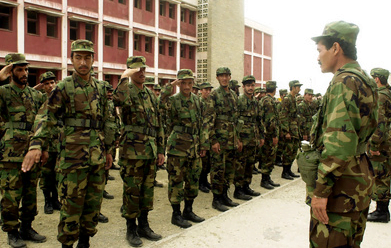Carlotta Gall of the New York Times reports that Afghan forces in Zabul are doing well as they take over security from ISAF. She writes:
Afghan Army battalions have deployed in the districts of Zabul, and are the first in the country to operate independently. They are emerging as a real authority acceptable to local people and as an alternative to both the Taliban and international forces, which are still received ambivalently…
…the Afghan Army base [in Shinkay, Zabul] has not come under attack in two years, Colonel Dost said.
…The road to Shinkay District was repeatedly under attack or laid with mines until six months ago, Colonel Veres said. But the number and strength of the roadside bombs or improvised explosive devices — I.E.D.’s — have declined, he said.
Gall attributes the security improvements to the Afghan army. But the facts need more clarification. She doesn’t mention when the Afghan forces began taking control of security and how much of it. The improvements above might not be entirely their achievement because the actual security turnover is set to begin in July – and Zabul is not even among the first seven areas slated for the transition.
The first to undergo transition are the provinces of Bamiyan, Panjshir and Kabul (except its Sarobi District), and the cities of Herat, Lashkar Gah, Mehtarlam, and Mazar-e-Sharif. A joint Afghan-NATO group chose these areas for having a sufficient level of governance capacity, security and development. After approval by NATO defense ministries, President Karzai ratified and announced this list.
But ISAF forces appear to have started a de facto transition in Zabul despite the incredibly low levels of development and governance capacity and, apparently, without formal approval from Afghan higher-ups.
Not only that, but the Afghan troops are operating in a governance vacuum that could undermine civilian governance for years to come. Gall writes:
Increasingly, they are handling security, relations with the people and even dispute resolution.
For example:
A family dispute led to the murder of two men in Shinkay recently. Rather than go to the police, tribal elders, or even the Taliban, villagers went to the Afghan National Army base and asked Colonel Dost to help sort it out.
The army already enjoys a better reputation vis-à-vis the police but now, juxtaposed against the civilian government, it is eclipsing them, too. If this becomes a national, long-term trend, it can impede efforts to establish and expand a credible Afghan government across the country.
The July transition is happening when the war is at its worst and civilian and military casualties are higher than they have ever been. This bit of seemingly good news from Zabul will likely serve the urgency of the international troops and their increasingly war-weary public to withdraw regardless of any real qualitative improvement in the capability of the Afghan National Army to secure Afghanistan on its own.
In the absence of clear metrics to measure the capability of Afghan forces, stories like this one from Zabul must be analyzed carefully and the implications of a civilian-military capacity differential must be given more attention.
